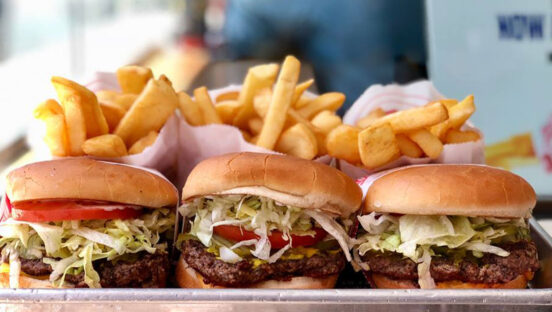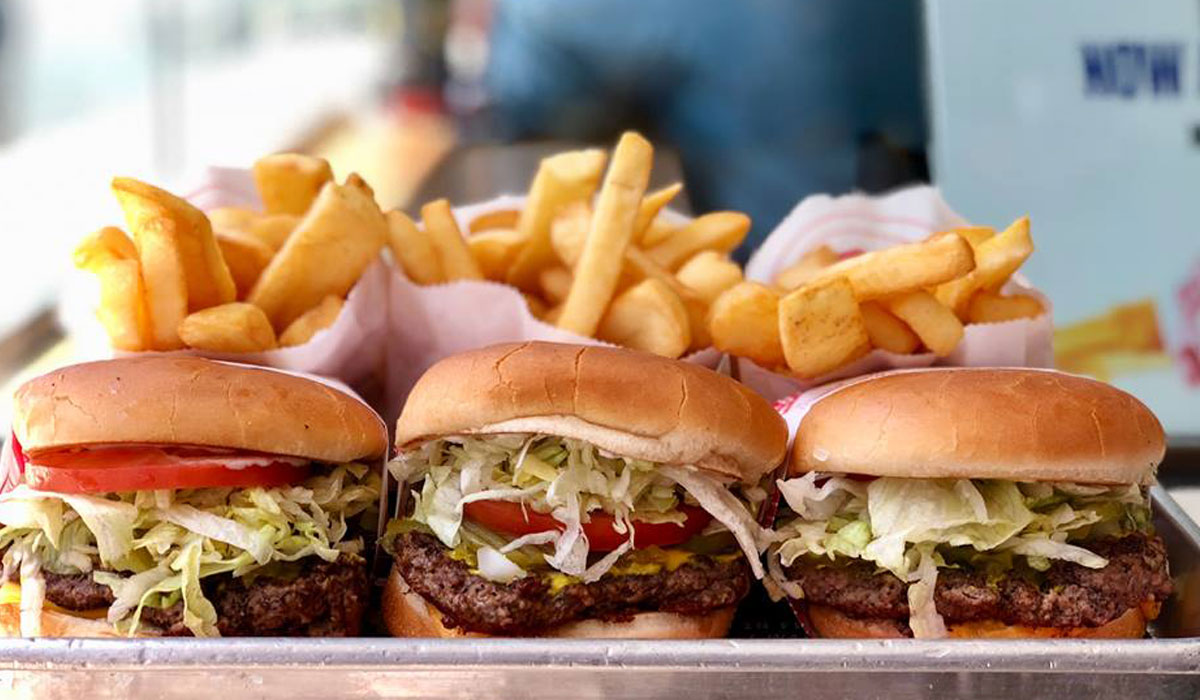FAT Brands has two new CEOs and a fresh slate of directors, but the game plan for delevering its balance sheet remains unchanged.
Ken Kuick, who joined the company as CFO in 2021, and Rob Rosen, who joined the same year as executive vice president of capital markets, took the helm at FAT Brands earlier this month. Outgoing CEO Andy Wiederhorn told investors on Monday he stepped down from his role to “remove the distraction” of an ongoing investigation tied to his conduct. News broke last year that federal authorities were investigating Wiederhorn and his family on allegations of securities and wire fraud, money laundering, and attempted tax evasion.
The former CEO has denied those accusations. He’s transitioning to an advisory role and will serve as chairman of the board. His company, Fog Cutter Capital, maintains a controlling interest in FAT Brands.
Fog Cutter recently cut most of the company’s board of directors, except for Wiederhorn and one independent director who was reappointed to her seat. The majority of the board was replaced with a new group that includes three of Wiederhorn’s children–Mason, Taylor, and Thayer Wiederhorn–and their grandfather, Donald Berchtold.
The family members work for FAT Brands in an executive capacity. Thayer Wiederhorn serves as chief operating officer, Taylor Wiederhorn serves as chief development officer, Mason Wiederhorn serves as chief brand officer, and Donald Berchtold serves as chief concept officer. Carmen Vidal, the international legal consultant for FAT Brands, also was appointed to the board alongside three new independent directors. Management team members who serve on the board won’t receive director fees, so the changes are expected to save the company around $1.1 million annually.
Kuick and Rosen will continue in their respective roles while plowing ahead on the company’s plan to chip away at its debt. That includes a focus on increasing organic growth through new store openings, utilizing more of its manufacturing capacity, and bolstering the success of Twin Peaks. FAT Brands made progress on all three fronts in Q1, but there’s still a ways to go when it comes to reducing the debt-to-income ratio.
READ MORE:
FAT Brands Unlocks the Strength of its Diverse Portfolio
After M&A Moves, FAT Brands Finds Next Act
FAT Brands Knows Exactly How to Remove its Debt
First-quarter revenue grew 8.5 percent to 107.5 million, reflecting increased revenues from new restaurants and a 4.3 percent increase in systemwide same-store sales. FAT Brands widened its net loss from $18.5 million a year ago to $23.5 million. Adjusted EBITDA grew 27 percent from $15.1 million to $19.2 million. On a trailing 12-month basis, adjusted EBITDA was $92.9 million.
The company has a 1,000-unit pipeline that it expects to complete within five years. It estimates that growth will be worth around $60 million in incremental adjusted EBITDA, which would push its adjusted EBITDA to approximately $150 million. That level of adjusted EBITDA would naturally delever the business, which means the faster it can open new stores, the faster it can become cash-flow positive.
To that end, FAT Brands opened 41 new restaurants in Q1. Forty-five units are slated to open in Q2. The company expects to open 175 new stores by the end of the year, marking a 25 percent increase from the 142 new restaurants it opened last year. It also signed 77 new franchise development deals in Q1 and expects to hit 100 deals by the end of Q2.
Wiederhorn said it’s unlikely the company will have another year like 2022, when it signed development agreements representing a total of 362 new stores.
“We’re hoping to get to 200 this year,” he said. “We’re 25 percent higher in new store openings than we were a year ago, so franchisees are continuing to build stores at a faster pace. They’re still buying the territory rights for new development, perhaps at a slightly slower pace than last year, but I don’t think last year is a good example of a year that we’re going to hit every time.”
As part of its organic growth strategy, FAT Brands remains “laser-focused” on accelerating development for Twin Peaks, he added. The brand saw AUVs of around $6 million in Q1, with some of the highest volume locations generating AUVs between $9 million and $12 million.
The sports lodge concept is set to hit a key milestone at the end of May when it surpasses 100 locations. FAT Brands expects to open 18-20 new Twin Peak stores this year, which would see the brand close out 2023 with approximately 115 restaurants.
Wiederhorn said Twin Peaks is the only chain where FAT Brands is materially growing the number of company-owned locations.
“Both the return on invested capital and absolute dollar profit are very high,” he said. “We really want to see the EBITDA in that business go from a $40 million run rate this year to $50 million, and then $60 million, and so on.”
Along with accelerating growth across the Twin Peak business, FAT Brands is aiming to utilize more of the capacity at its manufacturing facility in Atlanta, which produces pretzel mix and cookie dough for several of its brands. Those efforts will generate more earnings in the short term while building up the value of both assets, positioning the company for future liquidity events that would wipe away most or even all of its remaining debt.
“You’re going to see us be able to put a mark on the value of those assets as we roll into the back half of 2023 and into 2024,” Wiederhorn said. “We thought going into 2022, after all the acquisitions we made in 2021, we would be able to issue common equity at a good price in the market and also refinance our debt portfolio. But of course, the market changed. It made it more difficult to do those things, and it made us shift our focus towards a long-term solution instead of a short-term solution for paying down our debt.”
The factory is still in its early stages of growth. It currently operates at around 35-40 percent capacity and contributed $9.2 million in sales in Q1. The company is continuing to negotiate third-party manufacturing opportunities to ramp up utilization of the excess capacity. It also is rolling out dessert mixes and other products produced at the site to more of the restaurants in its portfolio.
FAT Brands in Q1 brought new cookie offerings to all Elevation Burger locations. Following that launch, it started rolling out cookies to several of its other burger concepts.
“Our goal is try to utilize as much capacity as possible between now and the end of the year, so that we’re in a position to perhaps list the factory business for sale sometime in 2024,” Wiederhorn said.








